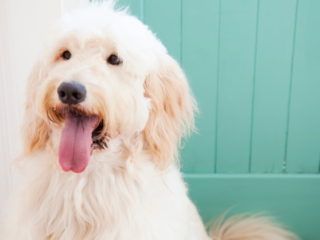Our dog’s tails can really tell us a lot about what they are thinking and feeling. Even our dogs who have docked tails or natural bobtails can be expressive. Australian Shepherds have the full range of tail diversity and today we are going to discuss all aspects of their fluffy or stubby back ends!
This article is meant the be a complete guide to answer every question you might have about your Aussies tail and then some! Be sure to keep reading to the end so you can get a sneak peek at our most popular Australian Shepherd article that answers a very important question.
What does an Australian Shepherd’s Tail Look Like
The look of an Australian Shepherd and Mini Aussies tail has a wide range.
In countries where docking is allowed Australian Shepherds will often have docked tail no longer than 4 inches, or a short natural stub tail. Some Australian Shepherds have a long natural or undocked tail that is low set and extends out behind their body.
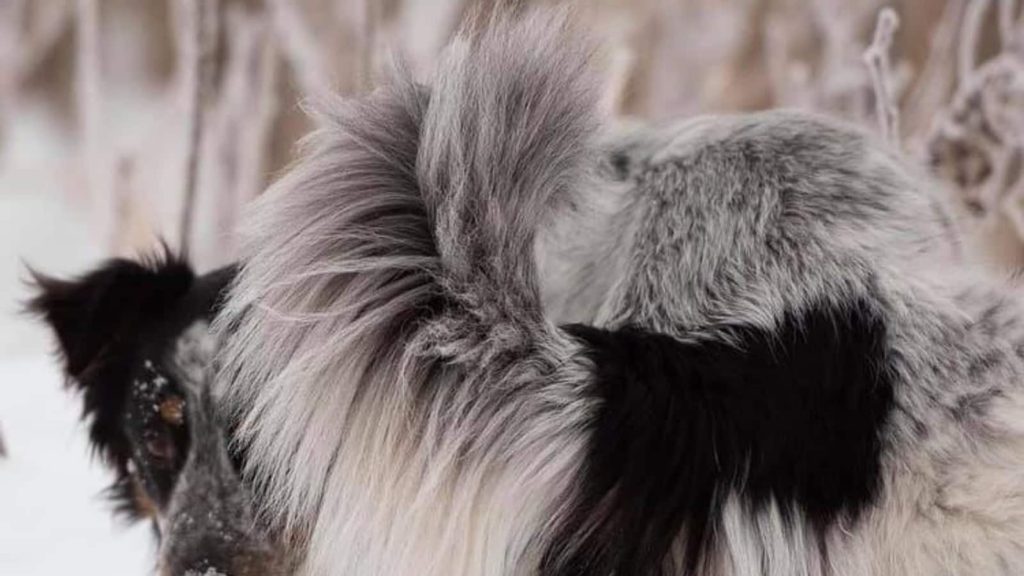
There are 3 different types of Australian Shepherd tails. We will discuss all three now.
Australian Shepherd Natural Bobtail (Undocked)
Approximately 1 in 5 Aussies will be born with a natural bobtail. This is due to a genetic condition called heterochromia which also affects Aussies eyes.
The natural bobtail (NBT) will usually be about a quarter length or longer. About 10% of Aussies with an NBT will have kinked tails.
A natural bobtail (NBT) is inherited when the dog has one NBT gene from one parent and a regular tail gene from the other. The NBT is incomplete dominant meaning it only needs 1 of the NBT to show the bobtail, so if the dog has that gene then it will have a bobtail.
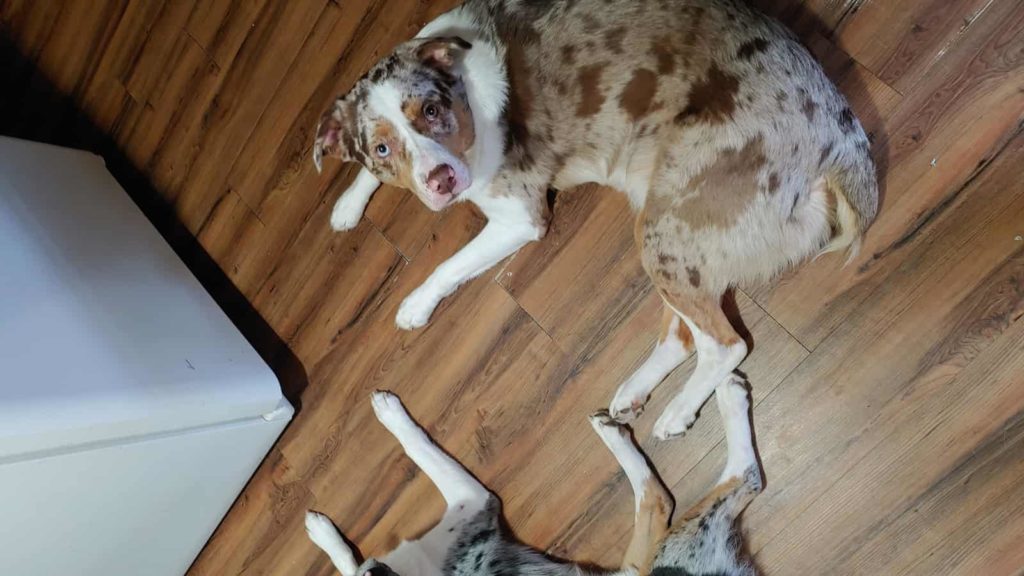
It is possible that the Aussie will inherit two genes for a regular natural long tail, so breeding a dog with an NBT will not guarantee that the offspring will have it as well.
As docking continues to become outlawed in many countries (link to Wikipedia article) breeders are doing more to preserve the natural bobtail by selective breeding which may come with its own set of problems.
🐾 Note: Aussies with natural bobtails should not be bred with other Aussies that also have natural bobtails (NBT) this will result in the offspring having a chance of inheriting two NBT genes which can cause a lot of problems for the puppies such as Spina Bifida and death.
Disclaimer: This post may contain affiliate links. We only recommend high-quality products that are used and recommended by real owners. If you use these links to buy something we earn a small commission.
Australian Shepherd Natural Tail (Undocked)
Many Aussies around the world are born with a natural tail that remains intact and un-cut.
The natural tail will be long and feathered. It starts thick at the base of the tail and tapers as it comes to a point. Some owners say it looks like a fox-tail.
If there are twists or kinks in the tail that could indicate a genetic flaw. Twists or kinks could also be from a previous injury to the tail.
Pictures of a Natural Australian Shepherd Tail
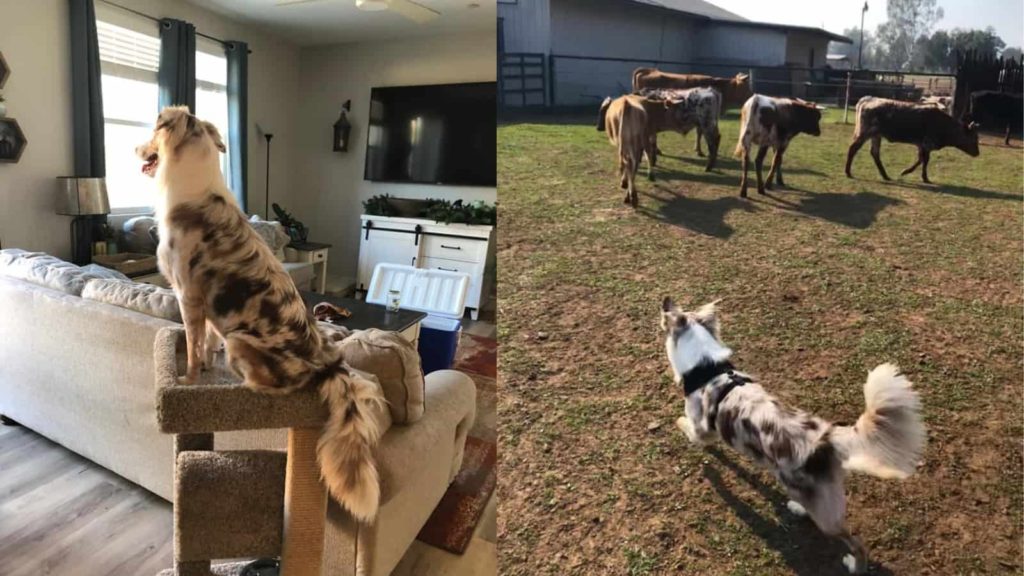
How long are Australian Shepherd Tails?
Australian and Mini Australian Shepherd Tails can vary in length.
Aussies born with a natural Bobtail are generally around 3- 4 inches long. Aussies with docked tails are docked to be 4 inches or shorter. Aussies with naturally long tails can be between 10-15 inches or longer.
Do Australian Shepherds Have Docked Tails?
The Majority of Australian Shepherds that are born with a natural tail that is not a stub tail and are born in the US will have their tails docked between 2-5 days old. This is to conform with the breed standards of the AKC. In countries such as Australia and the UK docking of tails has been banned.
Docking a dog’s tail too short can come with risks of spinal injury.
🐾 Note: When looking for an Australian Shepherd puppy in the US, if an undocked tail is important to you, you will need to have a lot of patience as it can sometimes be difficult to find a reputable breeder that doesn’t dock Aussies tails.
Some breeders who are not registering their puppies with the AKC will choose not to dock their litters’ tails. They may allow you to choose if you want your Australian Shepherd puppy to have a docked tail or not.
You will most likely need to pay upfront for the puppy before it is born. Often you will also have to sign a contract that does not allow you to get a refund if you were to change your mind.
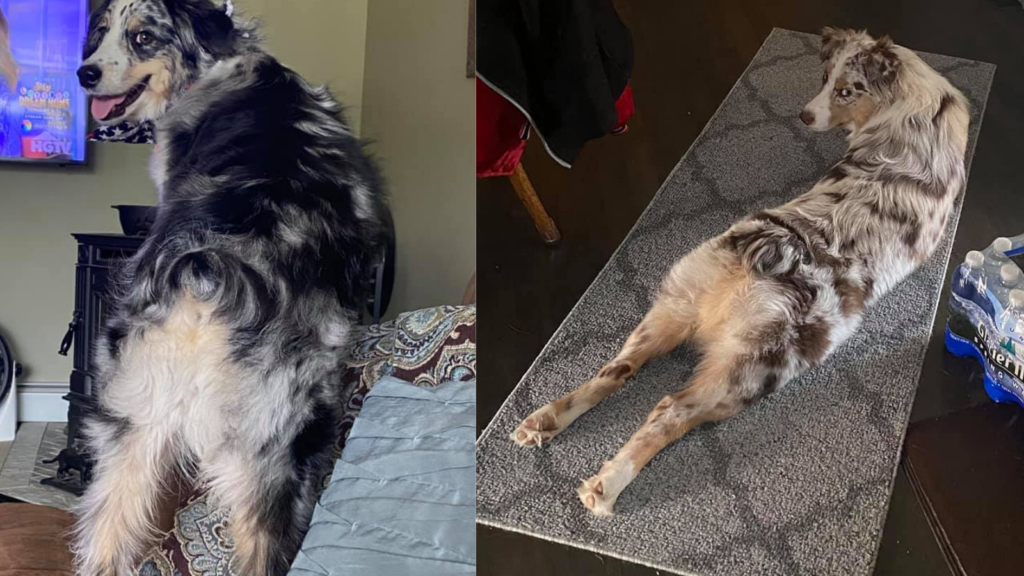
Why Do they Cut (Dock) Australian Shepherd Tails?
Docking is a tradition that dates back to Roman times when they would dock a dog’s tail because they believed it prevented rabies.
In the United States, the practice of docking tails for cosmetic reasons began in the 1950s. This was done to conform to the breed standards and be accepted into the AKC.
Australian Shepherd tails were traditionally docked to prevent injuries while herding livestock. Many Aussies are still used as working dogs on ranches and are safer with a docked tail.
Breeders of Show dogs will dock their Aussies’ tails in order to conform with the AKC standards.
🐾 Fun Fact: In the 18th century there was a tax imposed on all dogs unless they were working dogs.
So naturally, people decided to cut all ‘Working dogs’ tails off to tell them apart from non-working dogs.
Sadly, that led to owners cutting off their non-working dogs’ tails just to avoid getting taxed.
Aussies have such long fluffy tails that when they are working in the fields around livestock and sheep there are many dangers that they might encounter as far as their tail is concerned.
Working Aussies will have their tails docked for these reasons.
- Long bushy tails get burs and stickers in them from being in the brush and fields often.
- Their tails are in danger of being stepped on by livestock.
- Their tails may easily get snagged in gaits fences or other things.
- They are overall more prone to injury which can cause the dog undue pain and may result in having to get its tail docked (amputated) as an adult which is much more painful to do than as a puppy.
Why do Breeders Cut (Dock) Australian Shepherd’s Tail
Breeders will dock Australian Shepherds’ tails if they are following the AKC standard. In order to register their pups with the AKC as well as have them eligible to become show dogs, they have to follow the standard which is a docked tail.
Some breeders who are breeding Aussies to be show dogs will dock their puppies’ tails very short. They do this so when they are in the ring the top line is flat.
Breeders may have an incentive to have their puppies registered with the AKC as it is a type of status symbol and there are a number of benefits for the breeder to have their pups registered.
They not only get recognition for conforming to the breed standard, but they may also have an easier time finding a new home for their pups while getting top dollar.
Because they have to go through some rigorous genetic testing and health screenings, many buyers prefer to buy a puppy that is registered with the AKC in order to ensure that they are healthy and purebred.
Generally, a breeder that follows the AKC standard has been very careful to breed dogs that are healthy and free of genetic health problems.
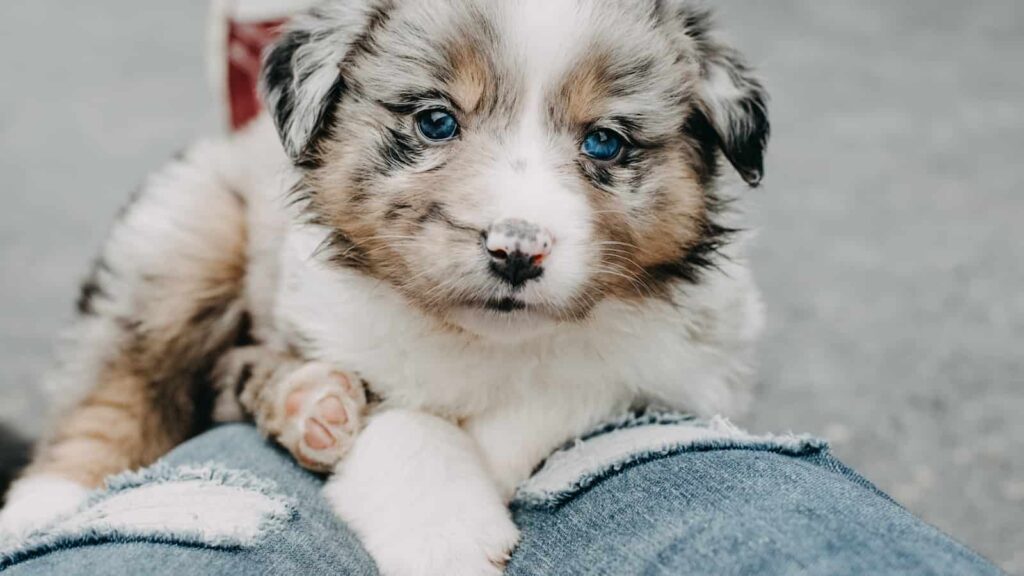
The Process of Docking an Australian Shepherd Tail (When and How)
Australian Shepherd tails are most often docked between 2-5 days old.
There are 2 ways that the docking may be done.
🐾 #1 Make a surgical cut with special shears about 2-3 inches below the base of the tail.
🐾 #2 Band the tail in the same place and allow the remaining part to either be reabsorbed or to drop off on its own.
Either way, the docking should always be performed by a licensed vet in order to ensure that there are no complications such as infection or nerve damage.
🐾 Note: Docking is done on puppies at such a young age because the cartilage is soft and the bones have not yet developed.
Dogs who are older than 8 weeks will have vertebrae in their tails that will need to be carefully cut around. Dogs this age and older will need to have anesthesia in order to avoid the sharp pain of the procedure.
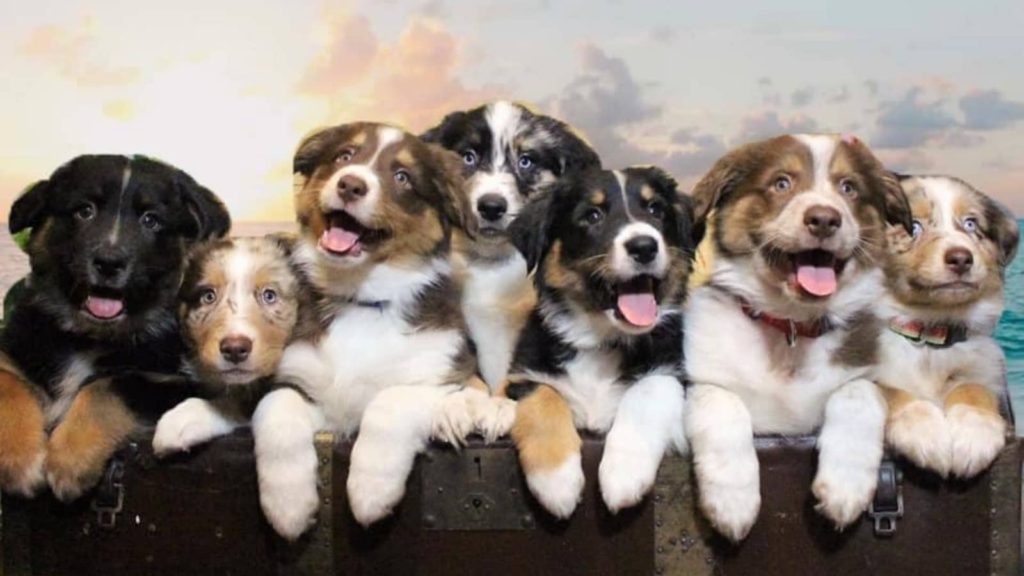
How to Get an Australian Shepherd Puppy With a Tail
There are many people who love Australian Shepherd tails just as much as Aussies themselves. There have been many dog owners I’ve talked to that want to get an Aussie and express interest in finding one with an undocked tail. They love the long beautiful natural tail.
So can you find an Australian Shepherd with a tail, and if so how?
Yes, you can find an Aussie with a tail. Many Aussie owners have had success getting a dog with a tail but it will take added effort, research, and cost on your part to find a healthy puppy from a reputable breeder with an undocked tail.
Here are some things you can try.
- Ask a breeder before the litter is born to leave the tail intact. A lot of breeders will be happy to accommodate if you pay for your puppy upfront.
- Travel to a different country to find your dog. Many countries in Europe, parts of Canada, and Australia are all examples of countries that have made it against the law to dock dogs’ tails.
You will want to be sure however that neither parent of your new pup has the gene for a bobtail. Or you might end up with a short-tailed Aussie anyway. - Keep an eye out in your local rescue for an Australian Shepherd.
- Love the Aussie with or without the tail! It’s a special breed and even without a tail they are so expressive and cute we can overlook the lack of that fluffy bottle brush on their bums.
List of Australian Shepherd Breeders That Leave a Natural Tail
Here are some breeders that either always leave their litter’s tails undocked or are willing to leave a natural tail on a puppy that has been paid for in full in advance.
Always confirm with the breeder before paying for the puppy that you desire to have an intact tail. Also, be sure that neither parents have a naturally bobbed tail.
🐾 Australian Shepherd Puppies – Painted Blue Aussies Salt Lake City, UT
🐾 Roserock Aussies | Facebook Nobile OK (Willing to Travel)
🐾 Faith, Feathers & FurBabies Australian Shepherd and Aussiedoodle puppies | Good Dog Wayne, WV
🐾 Australian Shepherd puppies for sale Nebraska Australian Shepherds Ansley, NE
🐾 Naturally Aussome! | Facebook
Join this Facebook Group to find more options for breeders who leave natural tails.
🐾 Aussies WITH tails! -Breeders- Australian Shepherd & Mini American Shepherd | Facebook
Do Australian Shepherd Tails Curl?
Australian Shepherds generally do not have curly or curled tails. Their tails are long and straight and should arc up slightly. If your Aussie has a kink or curl in their tail it could be a sign of a genetic flaw or an injury.
When Australian Shepherds are in a resting position their tail carriage is typically slightly above or slightly below the topline. Their tail position will change frequently depending on their mood and what they are trying to communicate with you.
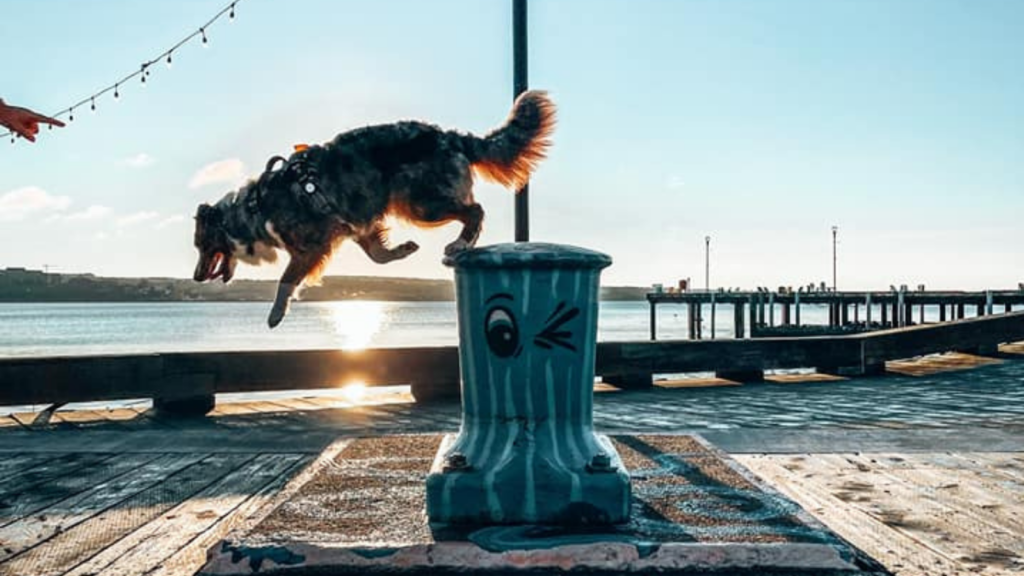
Australian Shepherd Tail Wagging and Communication
Aussies wag their tails (or in the case of a stub tail, their butts) for many different reasons. It’s a big part of how they communicate with you.
Wagging their tail doesn’t always mean they are happy. They could be conveying other emotions like nervousness or fear as well.
The key to understanding their tail wags is to put it together with all the other contextual clues they are giving you. What are their ears doing, their eyes, how is their posture? Noticing these things as well will help you know why your Aussie is wagging its tail.
Here are some things your Australian Shepherd could be communicating to you with its tail.
- Calm and chill – Tail in the natural resting position. Sleeping or resting or casually walking around.
- Greeting or I love you – Usually, a big carefree wag, accompanied by eye contact, coming to you and jumping on you, or trying to get your attention.
- Curious or unsure – Backwards and gentle wagging. The tail position is held a little bit down. Maybe sniffing around a little, intense and curious staring. Looking to you for reassurance.
- I’m nervous or scared – The tail between their legs and possibly slightly moving. Whining, crying or shaking. Body tense, eyes down, ears laid back. Could also be trying to communicate a submissive position.
- Aggression – Tail high in the air and rigid. Poised, rigid, and making eye contact. Could be barking or growling as well.
- Happy and Excited – Fast care-free wagging. Wiggling body, happy facial expressions. The body is not tense, possibly going in circles around the object causing excitement such as a treat or toy.
🐾 Fun Fact: Wagging their tail towards the right side of their body can indicate more positive emotions such as relaxed, and happiness. Wagging their tails on the left side of their body is a sign of more negative emotions such as nervousness or fear.
Some dogs are bigger tail-waggers than others. If your dog doesn’t wag its tail a lot it’s most likely nothing to be worried about. You will just need to work on identifying other body language cues to help you understand what they are trying to tell you.
If your Aussie has recently stopped wagging its tail then that could mean that there is something else going on. If you have just moved, or they are new to your home this could just mean they are nervous and need some time to get acclimated to their new environment.
Australian Shepherd Tails Problems and Solutions
We want our Aussies to have a long healthy life. Whether it’s their teeth or their tails making sure that every part of them is healthy and strong is our job as their owner.
🐾 Note: Read more about Australian Shepherd Teeth here.
Because our dog’s tail is such a big part of them and how they express themselves it can be quite alarming if something seems wrong with it or if they seem like they are in pain.
You should always consult with your vet if you are worried something may be off, but in the meantime, I know that having an idea of what it might be can bring some peace of mind.
Here are some common problems that you might run into concerning an Australian Shepherd’s tail.
Australians Shepherd Tail Chasing & Tail Biting
For the most part, if your Aussie is chasing its tail it’s most likely just a harmless game.
Puppies tend to do this a lot because they are so playful and exploring more about their world and discovering their fun long tails (or lack thereof). If your dog is chasing his tail it might be because he’s bored or it’s just a fun game for him.
The problem comes when your dog is obsessively chasing its tail and it seems like they are in pain stressed or biting its tail and causing things like bleeding, or hair loss.
If this is the case then rightfully you are probably concerned.
The cause for this could be one of several things. Here are the things that you can look for.
- Impacted anal glands.
- Parasites like fleas or ticks in the tail.
- Injury or sharp pain somewhere on the tail.
- Allergies or itchy skin.
- Separation Anxiety.
- Boredom and in need of more exercise. (Australian Shepherds require a lot of work to keep exercised and entertained in fact some may say they are best for experienced owners. Don’t miss out on reading this article and let me know if you agree. )
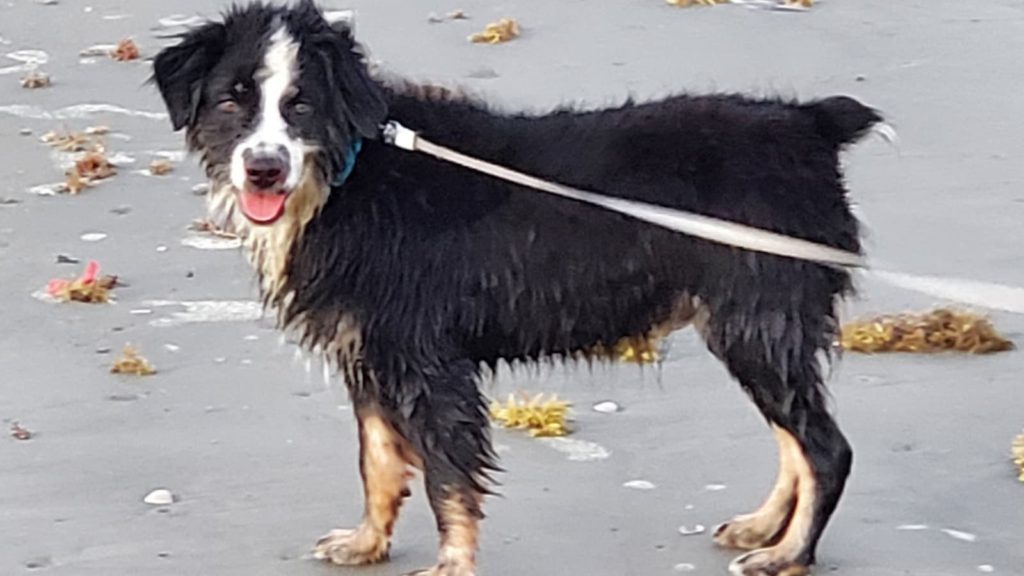
Hot Spots on Australian Shepherds Tail
Sometimes Aussies will develop hot spots on their tails or other parts of their bodies. A hot spot is a moist irritation that can be red, inflamed, and wet. They usually start out as allergies or slight skin irritation and if your dog chews or bites at it, it can become worse.
The best treatment is to keep the spot cool, and dry and keep your dog from licking or itching it. Your dog should wear a cone or a donut to prevent licking.
Keep the spot dry and clean. You can use corn starch to help dry it out. Your vet may give your dog antibiotics either internally or as a cream.
🐾 Note: Having your dog take fish oil or krill oil can help to battle hot spots as well.
Australian Shepherd Tail Hanging Down
If you notice your Australian Shepherd’s tail temporarily hanging in the down position it’s most likely an indication of submission or guilt. If your Aussie is unable to hold its tail upright, and it looks limp and unnatural it could indicate a more serious problem such as Limber Tail.
Limber tail, also known as swimmer’s tail, frozen tail, dead tail, broken wag, or cold tail. It is a condition that causes your dog to hold his tail limp and down instead of the usual upright position. Its official name is Acute Caudal Myopathy.
It is most likely to happen after your dog has had a very active or strenuous play, exercise, or excessive tail wagging. Some other causes can be swimming, being in cold wet weather, if they are confined to their crate too long, or if your dog’s tail is wagging and getting whacked on various surfaces.
This could cause your dog pain and its tail may swell, making it difficult to sit. Usually, this condition will go away on its own after a few days of rest. This could cause your dog pain and swelling in their tail, making it difficult to sit.
Usually, this condition will go away on its own after a few days of rest. It’s important to try and limit exercise and movement. If it is causing your Aussie a lot of pain then consulting your vet is a good idea.
Usually, this isn’t a chronic problem, but it is a good idea to figure out what may have triggered it in the first place and try to avoid that activity if possible. Coldwater play, or being confined in a crate too long are often things that could trigger this condition.
How to Groom an Australian Shepherd Tail
Aussies with long tails need a little more grooming and care than their short-tailed counterparts.
Generational genetics play a large part in the development of the size, color, coat texture, of your Aussies fur. That is why established breeders who have show quality Aussies do a lot of research and are very particular in pairing males and females together. This can be the reason their puppies may be so expensive.
Remember at the beginning of our article we mentioned our most popular article that answers a very important question and that is Should you shave your Aussies coat? Be sure to read the following article to find out the answer.
Shaving Your Australian Shepherd Is it Ever Ok? (The Truth Revealed)
Keeping your Aussies tail well-groomed is important to keeping it healthy and routinely checking for problems. Catching problems early will go a long way in preventing the potential for something to go terribly wrong with your dog’s tail.
Grooming your dog’s tail is going to consist of regular brushing as well as using a de-shedding tool. It’s important that you keep it well brushed so that it stays free from dirt, burs, or other debris that tends to collect in an Aussie that likes to play outdoors.
If you are looking for some owner-tested tips to help you with all that Aussie hair. This article can help you with that.
Australian Shepherd Shedding Complete Guide (Tips and Tricks From Owners)
Pro Tip: Having a grooming kit at home can help you maintain your dog’s beautiful coat and keep their tail looking nice and tangle-free!
Here is a video tutorial that can help you if you are trying to trim and groom your Aussies tail at home.
How to Keep Poop From Sticking to your Australian Shepherd’s Butt
This can be a common smelly problem for long hair dogs. If it happens often and doesn’t get taken care of it can also lead to serious health issues as well.
Here are some tips to keep your fur baby’s fluffy rear end clean.
- Keep the hair near their rear clean and trimmed.
- Keep wipes handy to clean it out right away.
- Add more fiber to your dog’s diet.
- Check for infections or parasites such as worms.
Taking care of our dog’s most stunning features like our Australian Shepherds Majestic fluffy tails may take a little extra work and know-how, but isn’t it worth it!
Read These Next: All About Grooming for Your Aussies!
Bathing Your Australian Shepherd (Tips & Tricks)
Australian Shepherd Grooming Styles
Australian Shepherd Shedding Complete Guide (Tips and Tricks From Owners)
Australian Shepherd Teeth Complete Guide (Cleaning, Problems, and More)
Shaving Your Australian Shepherd Is It Ever Ok? (The Truth Revealed)
While we strive to give the most accurate and helpful information about your pet’s health that we can, this article is meant to be informational only and not medical advice. Never disregard, avoid or delay in obtaining medical advice from your veterinarian or other qualified veterinary health care provider regardless of what you have read on this site or elsewhere.



